Choosing self-pollinated varieties of cucumbers for the greenhouse that are resistant to diseases
For cultivation in greenhouse conditions, early ripening cucumbers, disease-resistant, and self-pollinated, or parthenocarpic, are in great demand. What are the pros and cons they have and what are the nuances of caring for a culture, this article will tell.
The content of the article
What are self-pollinated cucumbers
Parthenocarpic cucumbers — this is a number of hybrids, the inflorescences of which are unisexual, most often female... Such varieties do not require pollination with the help of bees, and the fruits grow without seeds inside.
Parthenocarpic cucumbers unlike the classic ones, they have some advantages:
- they are grown without loss of yield in greenhouses and at home, where insects do not penetrate;
- fruits are identical to each other in size and color;
- do not turn yellow over time due to the lack of seeds inside.
Among the parthenocarpic cucumbers, there are hybrids intended for both indoor and for open ground... Some of them need a temporary cover made of film or other material.
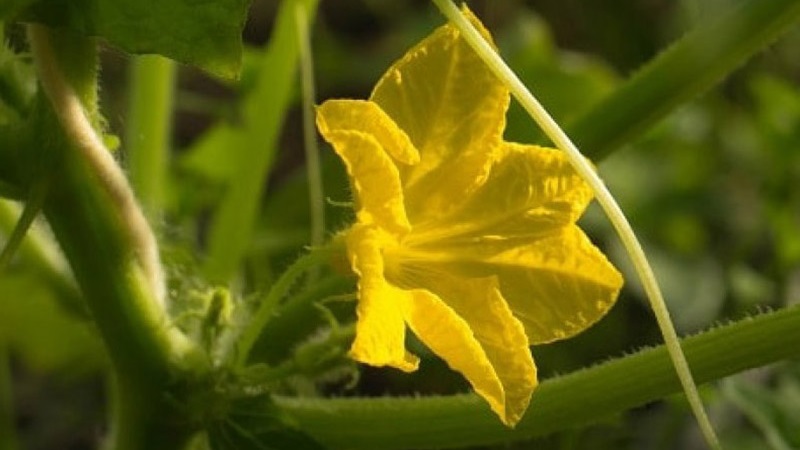
Important features of parthenocarpic cucumbers:
- When growing, unisexual flowers (usually female) are formed, so there is a heavy load on each bush. They need proper care - trimming the lower knots, a reliable garter, sorting fruits, etc.
- For the self-pollination process, shaking the flowers is not required.
- Parthenocarpic cucumbers should not be grown on the same territory as classic bee-pollinated ones, since insects land on all plants indiscriminately. This harms parthenocarpic cucumbers - they grow crooked, ugly, pear-shaped.
The self-pollination process looks like this: pollen from a flower is poured onto its own pistil, and ovaries are formed, which in the future form fruits.
Self-pollinated cultivars and hybrids of greenhouse cucumbers, disease resistant
The parthenocarpic hybrids that are most commonly grown in a greenhouse / greenhouse are described below.... They are not susceptible to diseases and have a high yield, due to which they successfully compete with bee-pollinated ones.
Important! Hybrids, in contrast to the usual classic cucumber, have a greater resistance to diseases, pests, and adverse conditions. At the same time, they are famous for their stable and sustainable yield. They have almost no barren flowers.
Ultra early
The earliest hybrids yield in the first 40 days of the growing season. They resistant to temperature changes in closed conditions.
Boy with thumb F1
Fruiting for 37-39 days... The branches are medium, the foliage is sparse. Axillary ovaries from 2 to 6 pcs. Cucumbers grow with small tubercles and white thorns, weighing 50-70 g, 7-10 cm long. The hybrid has a universal application.
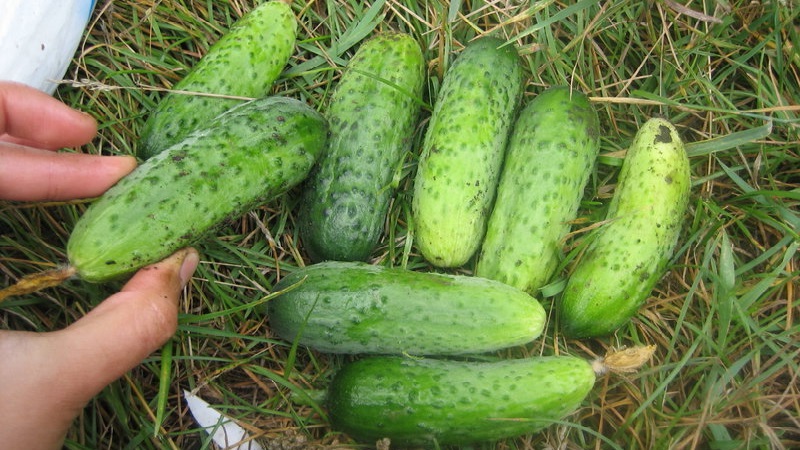
High yield - 10-13 kg from 1 m²... Cucumbers Tom Thumb not susceptible to the virus of cucumber mosaic, olive spot, powdery mildew. They grow well and yield a crop in indoor and outdoor areas with favorable external conditions.
Ant F1
Fruits are formed on the 37-38 day. Weak branching, oval fruits, with tubercles and white pubescence. Weight - 80-100 g, length - 8-11 cm. Harvest friendly - 10-12 kg per 1 m². The hybrid is versatile in terms of storage and stock.
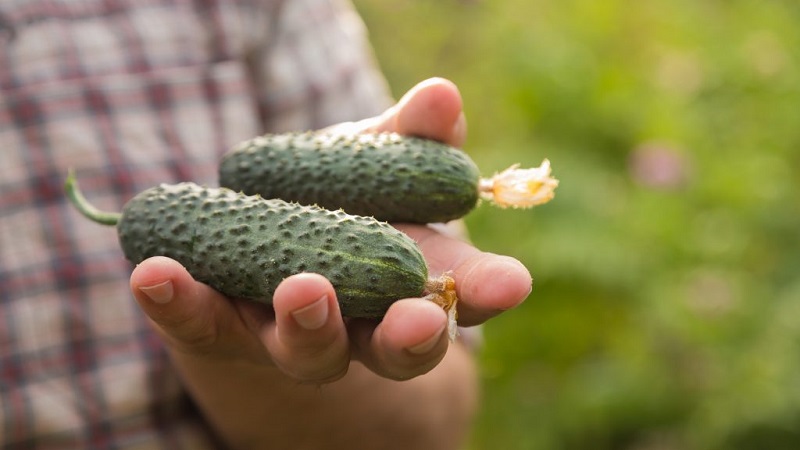
The ant is not affected cucumber mosaic virus, olive spot, powdery mildew. Recommended for planting in protected ground.
Furo F1
Fruiting for 37-39 days... Average branching, strong root system, short but powerful lateral shoots are present. Ovaries from 2 to 4 pcs.
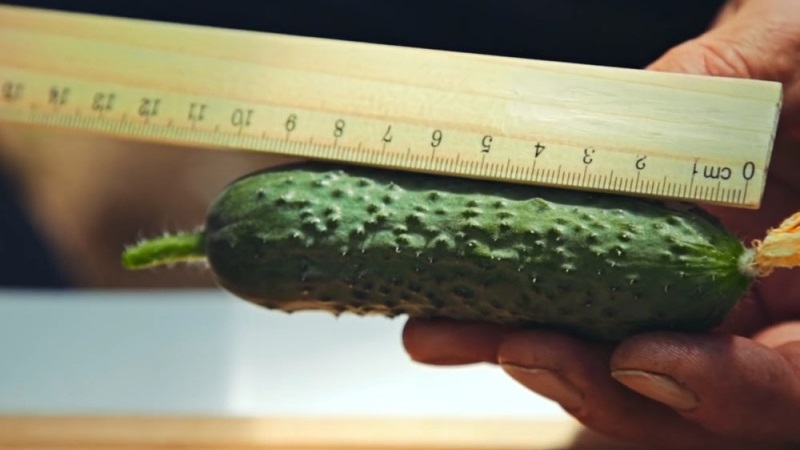
Cucumbers abundantly spiked, dark green, weighing 70-80 g, 10-12 cm long... The yield is 20 kg from 1 m². Resists cladosporiosis, cucumber mosaic virus, powdery mildew. Furo is grown only in greenhouses.
Early ripening
Ripening period - 40-48 days. Early ripening fruits are intended for fresh consumption, since in the middle of summer, few people are engaged in salting and pickling.
Goosebump F1
The fruits ripen in 43-48 days. Branching is not abundant, shoots are strong. Ovaries from 4 to 6 pcs. The fruits are short, cylindrical, with large tubercles and dark thorns. Weight - 90-110 g, length - 12-13 cm. Productivity - 10-12 kg per 1 m². Goosebump not subject to root rot, true and downy mildew.
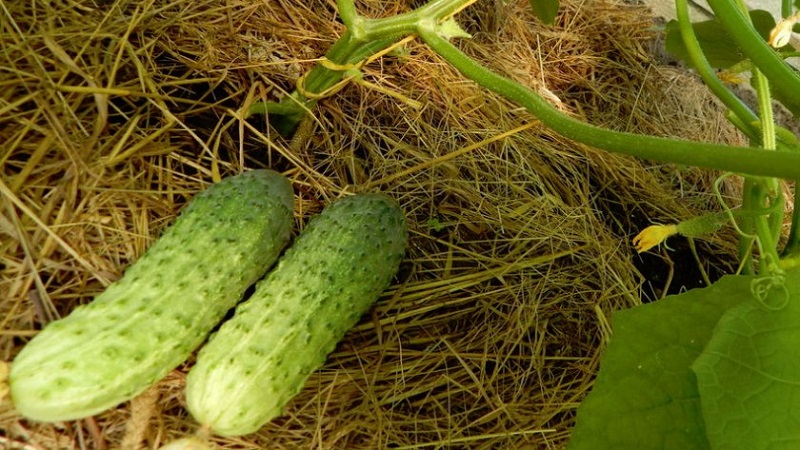
Real Colonel F1
Fruiting in 40-42 days. Branching and leafiness are average, the plant itself is vigorous. Ovaries from 1 to 3 pcs. Ripe cucumbers are cone-shaped, with a short neck, white pubescence and sparse tubercles, standard green color. Weight - 100-120 g, length - 10-15 cm. Sprout amicably, yield - up to 13 kg per 1 m². Hybrid Real colonel not susceptible to cladosporia and cucumber mosaic virus. Feels comfortable both in open ground with shelters, and in greenhouses / greenhouses.

Medium early
The growing season of mid-early hybrids ranges from 45-50 days or more. They suitable for winter work.
Pasadena F1
Fruiting for 45-48 days. Average branching, weak leafiness. 2 ovaries in each sinus. Ripe cucumbers, cylindrical, with white thorns, normal green, weighing 70-80 g, 6-9 cm long.
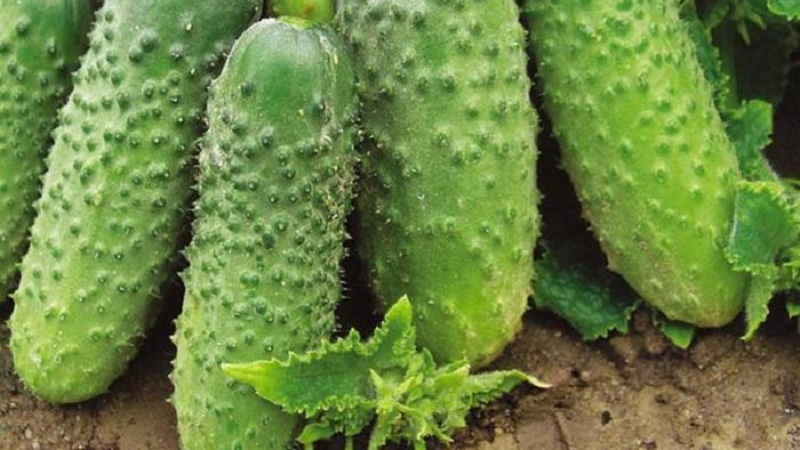
The hybrid is suitable for conservation and salting. Produces abundantly in a greenhouse and other protected grounds with suitable conditions. Pasadena is immune to cucumber mosaic virus, cladosporia and powdery mildew.
Benefit F1
The culture ripens in 45-50 days. Medium branching, dense foliage. In the bosom there are 2 to 8 ovaries. Fresh fruits are dark green, with white thorns, weighing 90-100 g, 10-12 cm long.
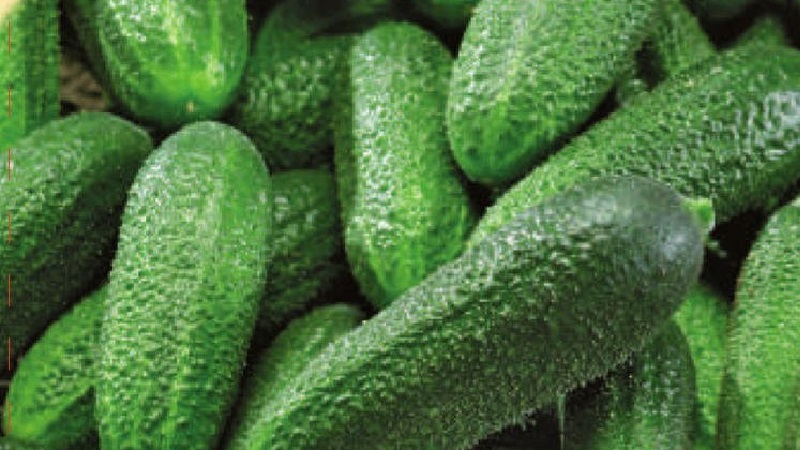
The hybrid is used for blanks. is he grows well in closed greenhouses... Not susceptible to false and true powdery mildew, root rot.
Late
Parthenocarpic late ripening varieties give a friendly harvest after 50 days.
Garland F1
Fruit length - 15-16 cm, there are tubercles, but no thorns. Hybrid Garland not susceptible to infections and diseases typical for cucumbers... Even in shaded conditions, the yield does not decrease.
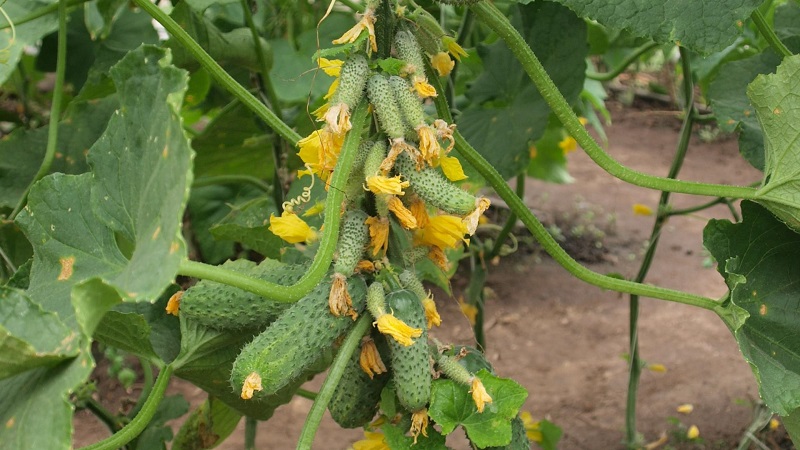
Courage F1
Fruiting for 45-55 days. The number of ovaries is from 2 to 10 pcs. Plants have a highly developed root system. The branchiness and foliage are dense. Ripe cucumbers are cylindrical, with white thorns, weighing 120-150 g, 13-16 cm long... Productivity - 6-8 kg per 1 m². Courage not susceptible to root rot and downy / powdery mildew.
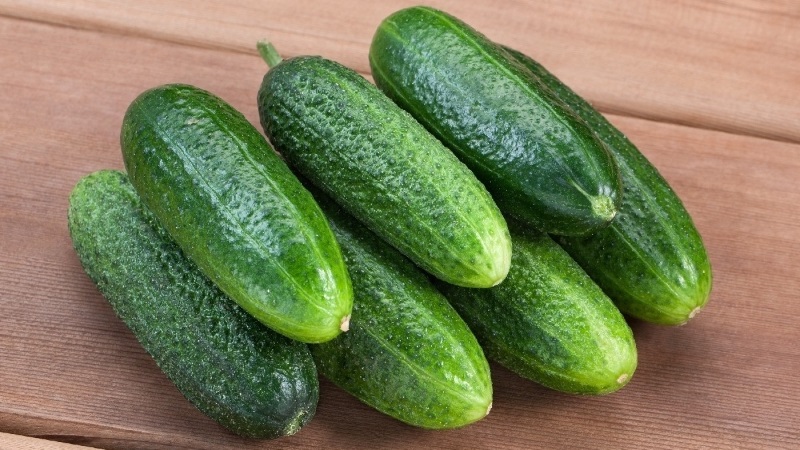
How to choose a specific variety
In order for cucumbers to give a consistently high yield, take into account climate, soil composition, peculiarities of a particular variety, the need for fertilizers, etc. The characteristics of a variety are usually written on a packet of seeds.
Depending on climate / region
Cold-hardy hybrids of parthenocarpic cucumbers are suitable for cool regions with windy weather: Zador, Claudia, Alliance, Ant, Crunch, Spring, Orpheus. They are shade-tolerant, disease-resistant, grown in protected and unprotected soil. They ripen quickly - an average of 38-45 days.
Heat-resistant hybrids are grown in warm regions: Spring whim, Merry company.
If the climatic conditions do not allow growing cucumbers in the garden, Hybrids Garland and Berendey are suitable for home conditions.
In arid regions, special attention is paid to watering... Cucumbers are moisture-loving plants. They should not be allowed to dry out.They are watered at the root, because the water that gets on the leaves causes burns under direct exposure to sunlight.
By landing time
Early and mid-season hybrids are planted in mid-late spring using seedlings, late ripening is prepared at the end of winter. But it is better to focus on the instructions: for each specific hybrid, the recommended time for sowing on seedlings or into the ground is indicated on a pack of seeds.
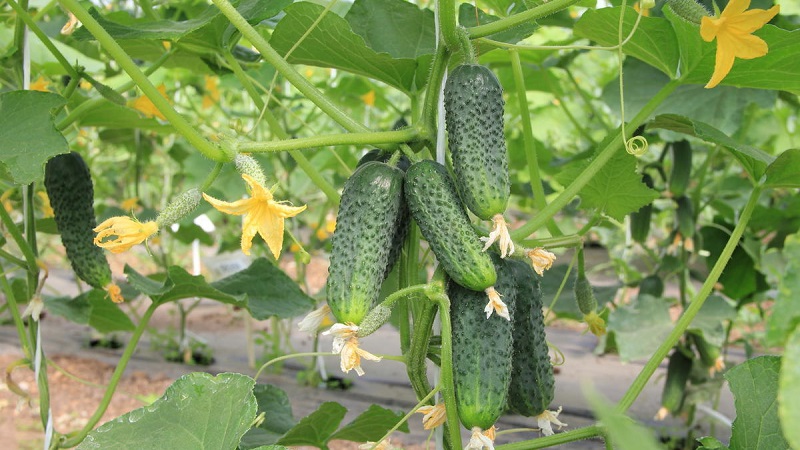
Ground requirements
For self-pollinated cucumbers, loose soil is needed, in which air circulates freely.
As a fertilizer, a composition of:
- 5 g of ammonium nitrate;
- 10 g superphosphate;
- 8 g potassium sulfate;
- 10 liters of water.
The mixture is sufficient for a whole bed of 1.5 x 1.5 m.
Experienced agronomist tips
For high yields, self-pollinated cucumbers are recommended to be grown by the seedling method.... So future plants will get stronger and ripen faster in a permanent place. It is better to plant the purchased seeds of self-pollinated cucumbers for the greenhouse immediately. They can be stored for up to 10 years, but every year the probability of germination decreases significantly.
Cucumbers (especially highly branched) need a garter, otherwise the stems will break, and the fruits will disappear. Cucumbers are fed 1 time in 9-12 days with organic and mineral fertilizers (10 g of urea or 200-250 g of manure per 10 liters of water). Watered with warm water once every 2-3 days.
Conclusion
There are many self-pollinated cucumber hybrids. When choosing, they are guided by climatic conditions, soil quality and planting time. Almost all parthenocarpic hybrids are resistant to common crop diseases, but this does not mean that prevention and care measures can be neglected.